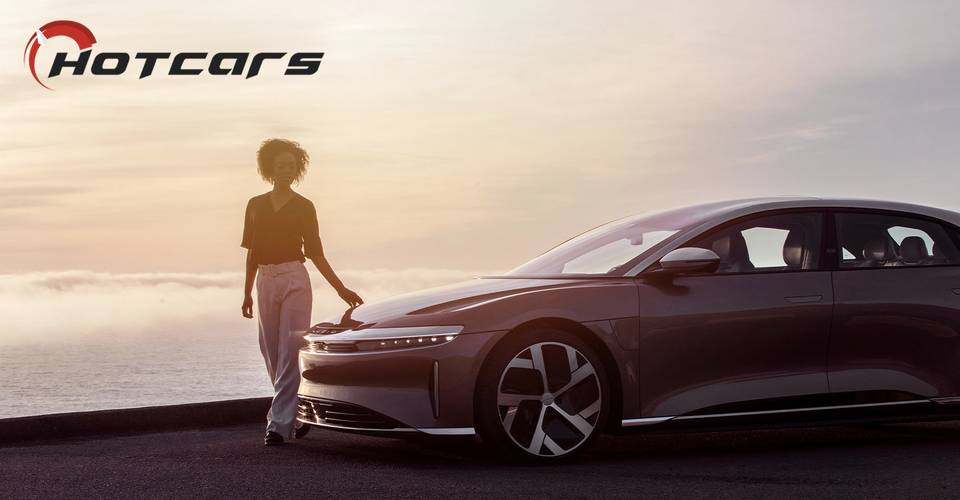
As daunting as the job might sound, now consider that the modern automotive industry as a whole finds itself upended by the rising tide of electrification—notably spearheaded by Elon Musk and his growing crop of Tesla EVs.
And now, as Tesla approaches establishment status, a handful of even newer EV startups have emerged, a prospect that has shaken the world’s major automotive brands to their very cores. Clearly concerned with being overtaken by more nimble competitors selling bolder visions, Ford made a half-billion-dollar bet on the electric Rivian pickup truck concept back in 2019 (before backing out due to Covid-19), while General Motors more recently dropped a $2 billion investment into a similar idea from Nikola (as in, you guessed it, pioneering inventor Nikola Tesla).
But among the companies most likely to release a game-changing electric vehicle in the near future, California-based startup Lucid Motors stands out from the fold with proven performance, a new vision developed by industry veterans, and, crucially, all the financing in the world.
In advance of the Lucid Air's planned 2021 deliveries, I recently spoke with VP of Design Derek Jenkins about designing a four-door hypercar EV, as well as the future of a startup that toes the line between emergent and established.
VP Of Design Derek Jenkins

At the time, Mazda was in the early stages of reworking its platforms, drivetrain tech, and overall aesthetic—Jenkins had a hand in it all, contributing to the CX-3, CX-5, CX-9, MX-5 Miata, Mazda3, and Mazda6. But all the while, he had his eye on the rising tide of electrification.
Joining Forces With Peter Rawlinson
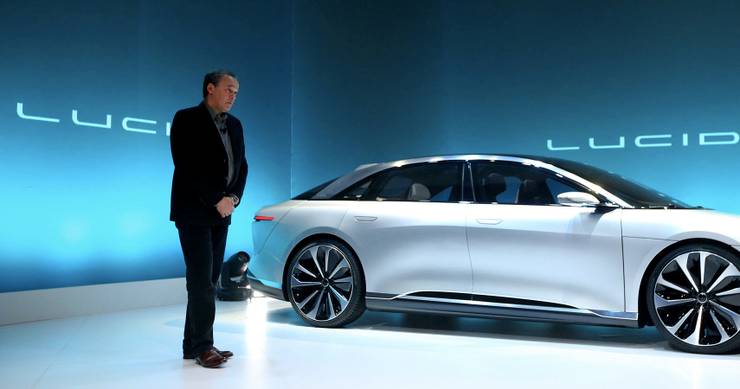
It was straight to the drawing board for Jenkins, though at that point, Lucid wasn’t even Lucid and the Air wasn’t the Air. “It was Atieva,” Jenkins explained. “It was a sedan concept that Peter had in his mind. And we basically started from scratch there and really defined the vehicle, the layout, the target customer, the market position, the product attributes, where our strengths were going to lie.”
Blank Sheet Design Process
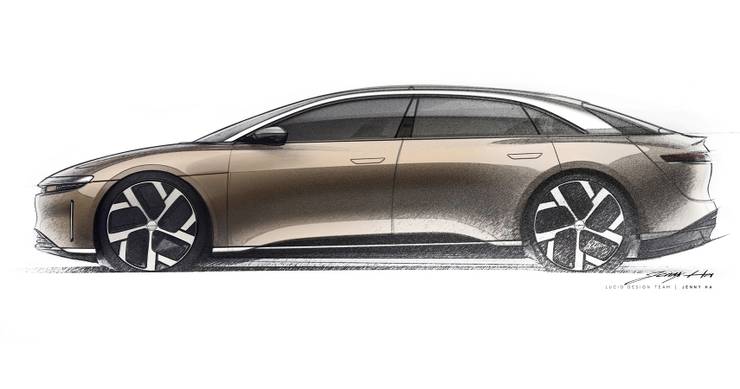
Joining Lucid (or Atieva) sounds like it was akin to joining a startup that had already proven its worth and acquired funding. Yes, Atieva produced electric batteries and powertrains, but Rawlinson wanted to jump into the luxury EV market. Jenkins told me he and Rawlinson began by thinking about the opportunities that an electric drivetrain affords designers:
“We really approached it like the components are miniaturized, we pushed them away from the occupants, maximized interior space. That became an immediate opportunity. And then keeping the outside compact, agile, and sporty so it’s still like a sport sedan on the outside, full-sized luxury on the inside, with hypercar performance—and the cargo capacity of an SUV. So you have this really unique combination of attributes that doesn’t exist in the marketplace today.”
Just to get the hypercar performance numbers out of the way, Lucid claims the top-spec Air will have over 1,000 horsepower, all-wheel drive, a minuscule 0.21 coefficient of drag, and that it can achieve a top speed of over 200 miles per hour in production form. All with an estimated industry-best range of 517 miles.
A New Way Forward
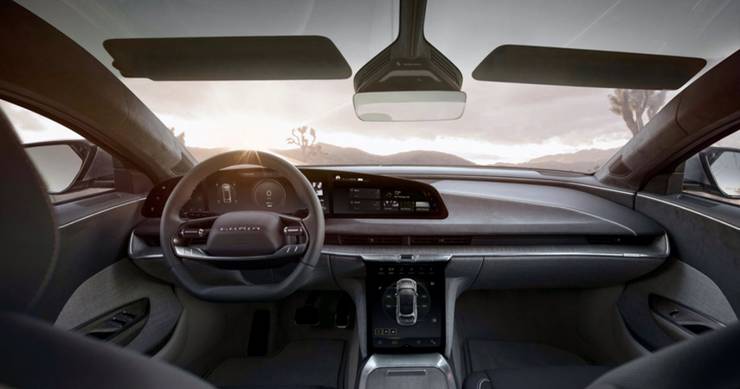
That aesthetic, in many ways, would provide the whole foundation of Lucid’s ethos moving forward. But despite being a brand with the clear intention of revolutionizing the future of automobiles, Jenkins and Rawlinson agreed they didn’t want to get too aggressive with the Air’s design language. And it all came down to the target customer.
“There’s always a temptation with electric cars to go super futuristic, like taken from a Tron movie,” he explained. “We felt like we can dabble in that a little bit but most luxury buyers today—and in a couple of years—don’t necessarily want a piece of science fiction in their driveway. They want something relatable, clearly future-focused but still elegant and sophisticated, as well.”
Getting the chance to jump into a blank-sheet design might sound like heaven to some creatives (and hell to others, to be fair) but Jenkins thought that brainstorming Lucid's theoretical foundation actually made his job a little easier.
“The car kind of designed itself around that [DNA]. We wanted the car to be very simple and elegantly sleek like an aircraft. And all the other details were meant to just exist in a very clean way.”
Futuristic Design Processes
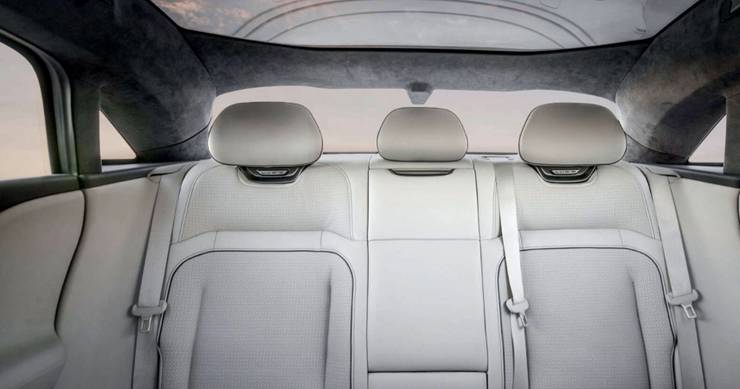
“On the exterior, [the challenge] was probably this cab-forward proportion. The car has a relatively long wheelbase and the cabin is stretched out much farther than other cars in that class. As a result, you end up with a fairly short hood and you end up with a very short trunk.”
Once upon a time, Jenkins had grown accustomed to working on sketches, then clay models, then going back to the drawing board, saying, “Often in the past, with clay modeling, you’d work something out in clay by hand, then you’d start on the B-side of the car and you’d have two themes going—A-side, B-side—and the digital model, all at once. You’d work like that for three, four weeks and review. And you’d realize the car looks worse than last time!”
Not so in the new era of VR, he said. “In virtual reality, I can iterate instantaneously… And I really enjoy working in VR because we can have five or six iterations of the car and you can quickly click through each iteration to figure out which attributes you like the best.”
An International Marketplace
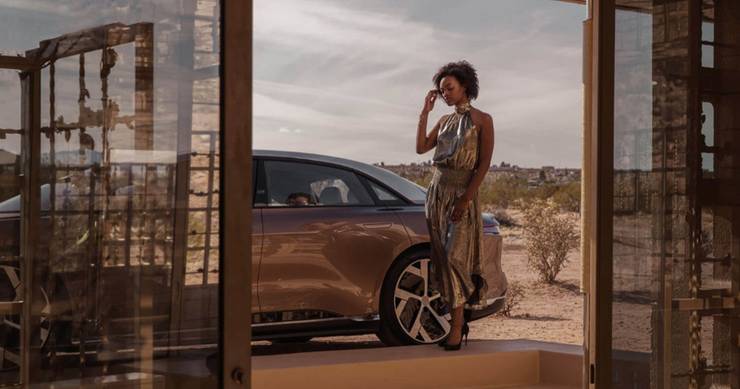
“I feel like there’s a very advanced customer out there,” he posited. “Especially at the mid and high end of the market… We built up a series of personas for North America: male and female, West Coast, East Coast. Then we started to set our eyes on Europe, the Middle East, and China to further define that global customer.”
The Air’s Design Heritage
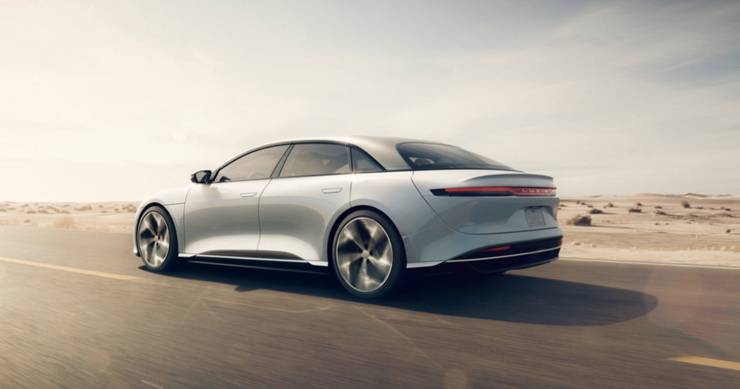
“I grew up in the ‘70s and ‘80s," he told me. "So all the cars that I appreciate—that I kind of obsess about—are from that time period. I’m a huge fan of, obviously, the first Countach and Lotus Esprit, Porsche 911 and Porsche 928. These kind of Italian and German-derived cars. Aesthetically, they’re quite different but that’s kind of my sweet spot: Bertone, Pininfarina, Giugiaro, Italdesign.”
To my eye, even before I’d done my prep and discovered that Jenkins worked on the second-gen A8, I thought the Air’s side panels resembled that sedan’s smooth yet substantial aesthetic—and that the rear canopy strongly hearkened back to Freeman Thomas’ first-gen Audi TT concept, too. Jenkins agreed, saying that, “The surfacing is just very simple but underneath it is still muscle and stance. I think those are the things that make a car look really good. Modern car design has gotten really complicated, unnecessarily, a lot of styling and a lot of lines, holes, scoops, and vents.”
Okay, then, I wondered aloud, what car does a future-facing designer like Derek Jenkins own himself?
“I’m a little bit more practical these days,” he responded. “I’ve got a few cars. We’ve got a Range Rover that I love because it’s really simple and timeless—and modern at the same time. I have a dune buggy, of all things, a Meyers Manx, which is kind of my weekend get-around vehicle. I love this air-cooled era of Volkswagen and kit cars."
“I’ve also got a [VW] GTI that’s my daily driver when I’m at work. It’s just fun and sporty. It’s a very holistic, democratic design that’s both sporty and doesn’t say anything pretentious. It’s just cool.”
My interview with Derek Jenkins will continue in Part 2 as we discuss how Lucid developed plans to take on Tesla, Porsche, and the entirety of the internal-combustion-powered luxury market.
Sources: lucidmotors.com, cnn.com, and freep.com
